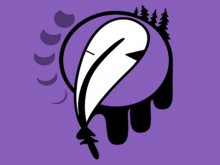Land Acknowledgement
McGill University is on land which long served as a site of meeting and exchange amongst Indigenous peoples, including the Haudenosaunee and Anishinabeg nations. We acknowledge and thank the diverse Indigenous people whose footsteps have marked this territory on which peoples of the world now gather.
Tips for Land Acknowledgements
Pronunciation Guide
Listen to the pronunciations on this webpage.
Name Phonetic pronunciation Kanien’kehà:ka
Haudenosaunee
Tiohtià:ke
Anishinabeg
Ga-niyen-ge-HAA-ga
Hoh-DEE-noh-SHoh-nee
Joh-jaw-gay
Ah-nish-ih-nah’-bey

The Land and Peoples of Tiohtià:ke/ Montreal
Educational resources to learn about the Haudenosaunee and Anishinaabe peoples, terminology for talking about Indigenous peoples, cultural practices, and more.

Historical Resources
Visit this section to learn about the history of McGill and Indigenous peoples, historical maps of the region, timelines, and audio-visual learning materials.

Cultural Protocols
Cultural protocols outline the customs and guidelines for cultural groups, and provide information for working with Indigenous peoples.
